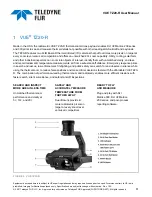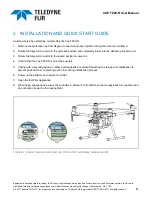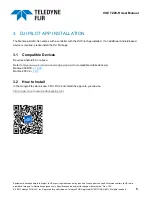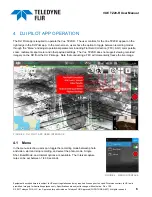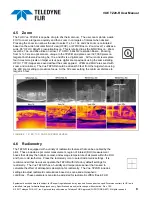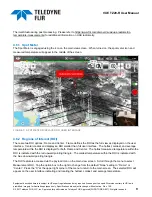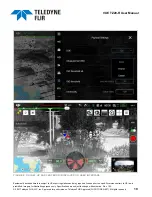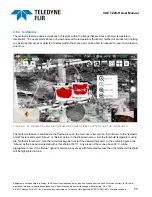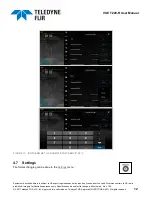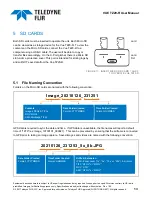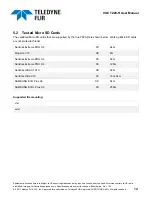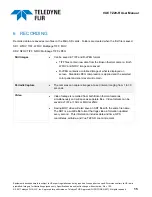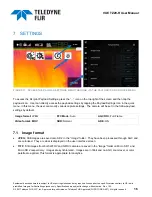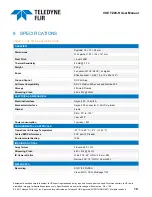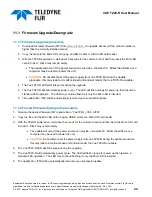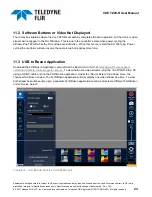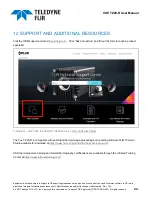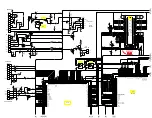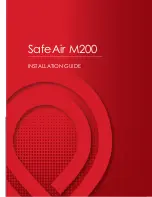
VUE TZ20-R User Manual
Equipment described herein is subject to US export regulations and may require a license prior to export. Diversion contrary to US law is
prohibited. Imagery for illustration purposes only. Specifications are subject to change without notice. Rev. 100.
© 2021 Teledyne FLIR LLC, Inc. Approved for public release. Teledyne FLIR Approved [FLIRGTC-SBA-007]. All rights reserved.
17
7.2 Video format
MOV:
H264 is encoded 640x512 25Hz video of what is shown on the user interface screen. This is saved
onto SD 1 in the “Mov” folder.
TIFF:
10Hz video is saved as multipage TIFF images in the “Seq” folder from both the WFOV and NFOV
cameras and are saved onto Micro SD 1 and Micro SD 2, respectively. The frames are synchronized. New
multipage TIFF files are automatically created every three minutes to avoid creating excessively large files.
7.3 FFC
Mode
The user can toggle between automatic or manual FFC mode. In automatic mode, the camera periodically
triggers an FFC in response typical FFC conditions. In manual FFC mode, the camera will perform an FFC only
upon command.
7.4 Scene Dynamic Range
This setting changes the scene temperature range (gain mode) of both cameras:
Hot (Low gain mode):
Appropriate range for higher temperatures scenes, -40 °C to 550 °C.
Normal (High gain mode):
Appropriate range for lower temperatures scenes, -25 °C to 135 °C.
7.5 AGC Region of interest
AGC Region of Interest allows the user to optimize the AGC for a subset of the total field of view. For example, if
the user wants to image a scene that contain a lot a sky in the field of view, the user can change the region of
interest to the lower portion of that field of view to enhance contrast on objects in interest. This enhances the
appropriate details by providing more color resolution on the target(s) of interest instead of applying the AGC on
the entire frame. See section 6.5.9 of the
Boson Engineering Datasheet
for more details. The TZ20 provides
three Region of Interest (ROI) options
7.6 Digital Detail Enhancement (DDE) and Advanced Digital Enhancement
(ADE)
These setting enable algorithms that can be utilized to help the user find low-contrast targets in high dynamic
range scenes. Similar to a sharpening filter, these nonlinear image processing algorithms are designed to
enhance the high spatial frequencies (edges) of targets in the image. ADE “On” is the default setting of the Vue
TZ20-R as most pilots prefer this view. Further details about DDE can be found at
https://www.flirmedia.com/MMC/CVS/Tech_Notes/TN_0003_EN.pdf.
Full
Frame
Lower
67%
Lower
50%

